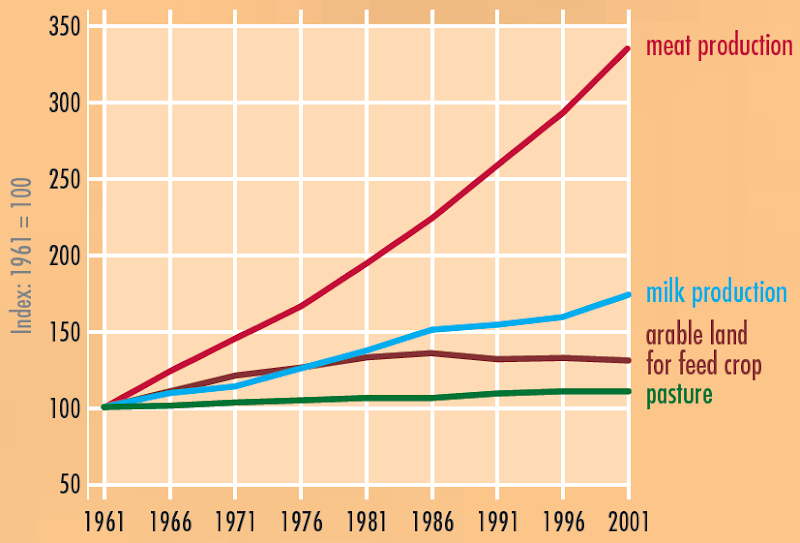Graph of the Day: Global Trends in Land-Use Area for Livestock Production, 1961-2001
Nearly 30% of the Earth’s terrestrial ice-free surface is devoted to livestock production, while 8% is devoted to production of crops that are directly consumed by people. As livestock production shifts to more intensive systems, it will place more pressure on arable land for the production of feed. Over-grazing has resulted in loss of biodiversity and productive capacity of ecosystems, particularly in arid systems. While pastoralism and mixed farming provide livelihoods in regions where limited alternatives are available, extensive production has widespread impact. Livestock production can lead to unsustainable water use. An increased demand for livestock products worldwide will influence water scarcity. Livestock production demands high water usage, often depleting local supplies. Inadequate waste management also causes pollution that impacts water quality. An estimated 20% of the total land used for livestock production is being degraded by grazing activities; 70% of land degradation occurs in arid regions. Many livestock systems provide environmental services for terrestrial systems, improving vegetation cover, biodiversity, and carbon sequestration. However, land modification and degradation lead to alteration of ecosystem dynamics and functioning. This includes impacts on biogeochemical and hydrological cycles, erosion and desertification.
New report reveals the environmental and social impact of the ‘livestock revolution’ [pdf]
